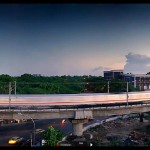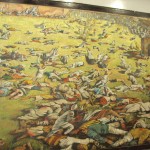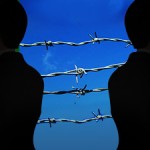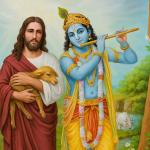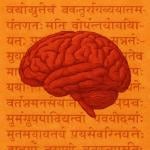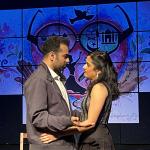There have been far too many divisive stuff happening in India recently – from the Mumbai blasts to the insistence on singing Vande Mataram and the refusal of the Muslims leaders to let their community to do so. Then came this blast in Malegaon in a Mosque. It seemed that the stage was set for a clash between the Hindu and Muslim communities.
Blast seemed like a trigger.
But it wasnt. Instead it became like an unusual glue between the two communities. Scenes that caught even the Malegaon residents off-guard.. and forced them to relook at themselves again.. for the good! Please read this unusual story.
In fact, scenes across this divide were united by tragedy. So while Muslims revisited the site of the blasts at Bara Kabristan to bury their dead and gather whatever belongings they could retrieve, around the same time, across the Mausam river on Tilak Road, in the Hindu part of town, vendors were picking up the remains of the day, from the hurriedly abandoned weekly Friday bazaar.
So Sonia Gandhi’s plea to maintain communal harmony in the wake of “acts aimed at creating a divide in society” is something Malegaon seems to have figured out quite early in the day.
Following the initial outburst against the police after the blasts – a mob went on the rampage, assaulted policemen and burnt vehicles – the city slept fitfully through Friday night’s drizzle. It woke up to a sunny, calm morning.
“It surprised us,” says industrialist Jameel Kranti. “All the while, I was out on the streets last night, I kept praying that violence shouldn’t erupt. The maturity of Malegaon caught me off-guard.”
But many other Malegaon-watchers aren’t so surprised. They claim that, yes, the first two hours after the blasts were tense, fears of a riot loomed large when large groups of Muslims made their way to the Wadia Hospital in the predominantly Hindu area to donate blood. Many of the local residents thought this was a mob heading towards them.
But within seconds, the “us versus them” attitude was dropped, helping hands came forward. Consider these:
• Advocate Shishir Hirey, who was part of the Riot Enquiry Council that probed the 2001 violence, believes that this is “a coming of age experience” for its nearly 9 lakh population. According to Hirey, who is also a member of the Malegaon Development Forum, the perception that there could never be a bomb blast here was shattered. “Almost immediately, word was out in the streets that this was a bigger conspiracy and not the doing of local residents,” he says. “We have learnt this the hard way.”
• “Improper communication and misunderstanding” have been blamed for all past riots. In 2001, anti-American protests led to riots and the death of 13 people. Riots before and after have been triggered by “insignificant” incidents. So this time, influential residents, both Hindu and Muslim, took to the streets, positioning themselves in hospitals and blood banks.
Others hit the road armed with water, food and compassion. All the while, they kept in touch, consoling the grieving and soothing the agitated. Despite mobile lines being jammed, the message was conveyed: this isn’t the time for violence. Reports of Hindus lining up to donate blood and Muslims forming a human chain so that hundreds of girls stuck in the Zilla Parishad school could be safely evacuated helped soothe frayed edges.
• Credit for the calm is very generously shared with the police. “Officers like SP (Nashik Rural) Rajyavardhan have made extraordinary efforts in the last few years to get the two communities together,” says Kranti. “And it is because of their direct interaction with the people that Malegaon didn’t explode this time.”
• Then there is economics. For weaver Abdul Lateef Abdul Gafur, a riot means loss of life and livelihood. “We need the Hindus to run our looms. They provide us the yarn and many of them market the fabric we weave. Without them there would be nothing in this town,” he says. “Earlier, no one thought twice before pelting a stone across the street. Now we simply can’t afford to.”


